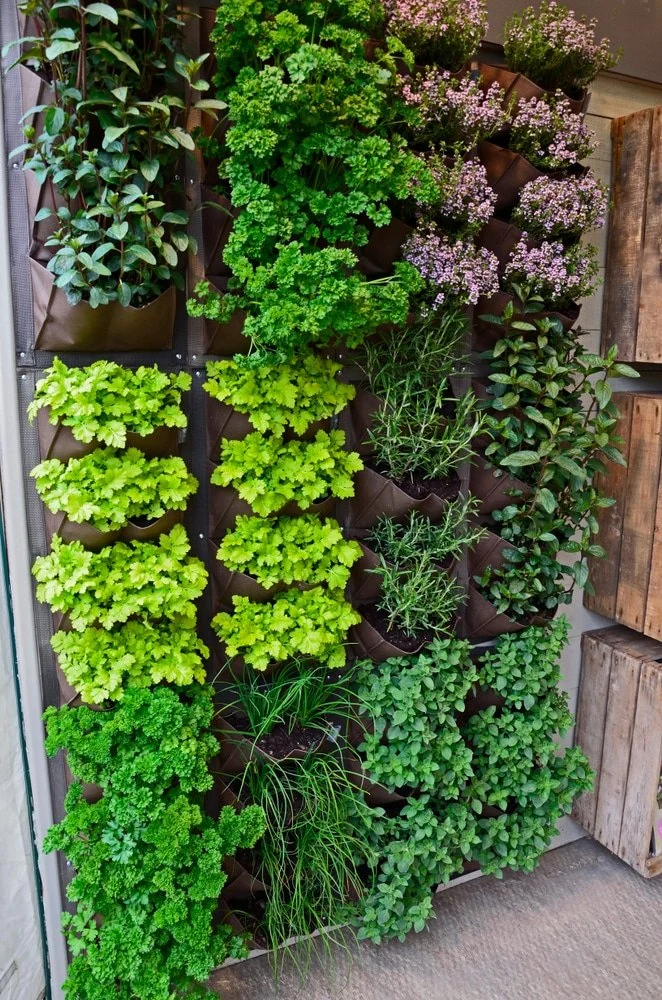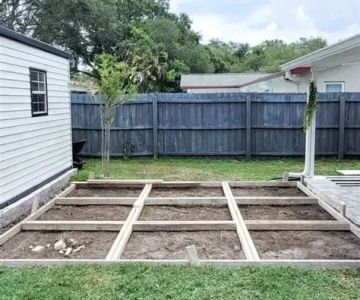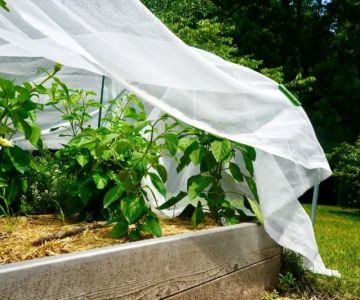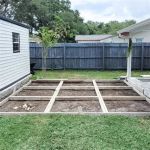
- What Is Vertical Gardening?
- Benefits of Vertical Gardening in Small Yards
- Step-by-Step Guide to Creating a Vertical Garden
- Choosing the Right Plants for Your Vertical Garden
- Real-Life Success Stories
What Is Vertical Gardening?
Vertical gardening is a method of growing plants upwards rather than outwards, making use of vertical space to maximize gardening potential in small areas. This technique is ideal for urban dwellers, apartment owners, or anyone with limited space. By using walls, trellises, shelves, or specially designed garden towers, vertical gardening allows you to create lush, productive gardens even in the smallest of spaces.
Whether you're interested in growing flowers, herbs, vegetables, or even small fruit trees, vertical gardening provides a practical and aesthetically pleasing solution. This innovative approach not only saves space but also improves airflow and light exposure, which can result in healthier plants.
Benefits of Vertical Gardening in Small Yards
For those with small yards, vertical gardening offers numerous advantages that traditional gardening cannot provide. Here are some of the key benefits:
- Maximizes Limited Space: Vertical gardening allows you to utilize unused vertical space, creating more room for other outdoor activities or decorations. This is especially beneficial for apartment balconies, tiny backyards, or patios.
- Improved Air Circulation and Sunlight: With plants growing upwards, you can optimize exposure to sunlight and promote better airflow. This is especially important in smaller gardens, where plants may otherwise compete for space and light.
- Reduced Pest Problems: Elevating plants off the ground can reduce the risk of pests such as slugs and snails, which are often attracted to plants at ground level.
- Easy to Manage: Vertical gardens are generally easier to manage and maintain. The height makes it easier to reach plants, prune, and harvest without bending over or kneeling.
- Enhances Aesthetic Appeal: Vertical gardens add a visual dimension to your space, creating a green, vibrant backdrop that’s both functional and beautiful.
Step-by-Step Guide to Creating a Vertical Garden
If you're ready to start your own vertical garden, here's a simple step-by-step guide to help you get started:
- Choose Your Vertical Structure: The first step is to select the type of vertical garden structure that suits your space and style. Options include trellises, wall-mounted planters, vertical garden towers, or even DIY solutions like repurposed wooden pallets.
- Prepare Your Space: Choose a location that gets sufficient sunlight, ideally at least 6 hours of direct sunlight per day. Make sure the space is sturdy enough to hold the weight of the plants and watering systems.
- Select Your Containers: Depending on the structure you’ve chosen, you may need individual containers, pots, or planters. Ensure they have proper drainage to avoid waterlogging, which can damage plant roots.
- Choose Your Plants: Select plants that are well-suited for vertical gardening. Vegetables like tomatoes, peas, and beans, or flowers like petunias and climbing roses, are all great choices. Be mindful of the amount of sunlight each plant needs.
- Planting and Watering: Once your structure is set up and plants are in place, ensure regular watering. Vertical gardens can dry out more quickly, so consistent watering is key. You may want to consider drip irrigation for efficiency.
- Maintain and Harvest: Regularly prune and maintain your vertical garden, ensuring that plants are growing properly. Harvesting is easy, as many vertical gardening systems allow you to pick from a comfortable height.
Choosing the Right Plants for Your Vertical Garden
The success of your vertical garden largely depends on selecting the right plants. Here are some tips for choosing the best plants for small, vertical spaces:
- Climbing Plants: These plants naturally grow upwards, making them perfect for vertical gardening. Consider vines like tomatoes, cucumbers, or sweet peas. Flowering vines such as morning glories or clematis are also great choices.
- Compact Plants: Many herbs and dwarf vegetables are ideal for vertical gardens. Think basil, parsley, thyme, and lettuce. These plants thrive in small spaces and don’t require much room to grow.
- Flowers: If you want to add color and fragrance to your vertical garden, opt for flowers that grow well in containers. Petunias, fuchsias, and trailing geraniums are excellent for vertical gardening setups.
- Succulents: Succulents are an excellent choice for vertical gardens because they require minimal water and thrive in sunny spots. Plants like echeveria and sedum are ideal for small, low-maintenance vertical spaces.
Real-Life Success Stories
Vertical gardening has proven to be a game-changer for many individuals looking to maximize their small yards. One success story comes from Sarah, an urban dweller with a small balcony in New York City. After creating a vertical herb garden on her balcony, Sarah was able to grow a variety of herbs, such as basil, mint, and cilantro, without taking up precious floor space. Her vertical garden became a beautiful and productive addition to her apartment, providing fresh herbs for cooking all year round.
Another example is Mark, a retiree living in a tiny suburban home. Mark transformed a small, unused corner of his yard into a thriving vegetable garden by using a vertical gardening system. With limited space, he grew tomatoes, cucumbers, and peppers, all while keeping his yard looking neat and organized. Mark found that his vertical garden allowed him to enjoy home-grown produce without sacrificing space for outdoor activities or lounging.








 Gunnar Olsen Landscaping4.0 (7 reviews)
Gunnar Olsen Landscaping4.0 (7 reviews) Walmart Patio & Garden Services0.0 (0 reviews)
Walmart Patio & Garden Services0.0 (0 reviews) Grow Lawn and Landscape5.0 (17 reviews)
Grow Lawn and Landscape5.0 (17 reviews) Timber Green Inc.4.0 (16 reviews)
Timber Green Inc.4.0 (16 reviews) Fiore Nursery & Landscape Supply5.0 (22 reviews)
Fiore Nursery & Landscape Supply5.0 (22 reviews) Abide R.E. Solutions5.0 (2 reviews)
Abide R.E. Solutions5.0 (2 reviews) How to Incorporate Ornamental Trees Into Small Landscapes: A Beginner’s Guide
How to Incorporate Ornamental Trees Into Small Landscapes: A Beginner’s Guide How to Convert a Concrete Patio Into a Green Oasis | Beautiful Landscapes
How to Convert a Concrete Patio Into a Green Oasis | Beautiful Landscapes How to Grow a Herb Garden in Your Landscape: A Step-by-Step Guide
How to Grow a Herb Garden in Your Landscape: A Step-by-Step Guide How to Create a Butterfly Pathway Through Your Garden
How to Create a Butterfly Pathway Through Your Garden How to Use Planters to Extend Planting Zones and Grow More Plants
How to Use Planters to Extend Planting Zones and Grow More Plants How to Revive a Neglected Lawn Step by Step
How to Revive a Neglected Lawn Step by Step